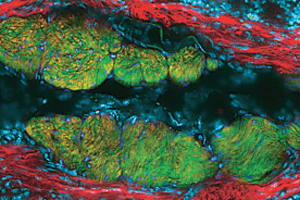Good and bad odors are present wherever we go. Although olfaction is not a key survival mechanism, it is highly important because it possesses a great amount of sensory capacity. This means it can detect even weak signals.
Our sense of smell contributes to the stimulation of our appetite and creates digestive secretions, as well as warning us from the presence of gasses that are harmful for our body.
Olfactory structures
Starting from the embryonic stage, the body develops a series of structures that facilitate our sense of smell. A brain response accompanies respiration, which enables us to pick-up on different odors.
The nose is the organ that receives odor molecules. It is a structure that juts out of the face a gives each person a specific aesthetic appearance. The nasal structure has nasal fossa on the inside, which conduct the true olfactory process. Both cavities are separated by the nasal septum and are found behind the nose and above the mouth. Another of their functions is to warm-up and moisten the air we breathe in, as well as catching dust molecules and bacteria.
The nasal skeleton is made-up of small parts and is formed by bones and cartilages.








 Muere Alejo Carpentier
Muere Alejo Carpentier